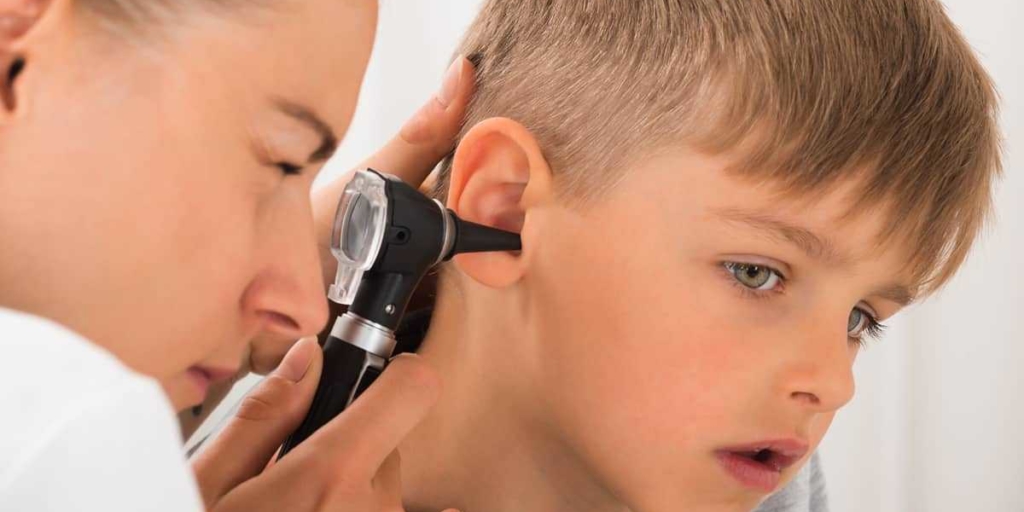What to Do if Your Child has an Earache

Earaches are surprisingly common in the United States and around the world. In fact, it is estimated that between one half and three quarters of American children will develop some type of earache problem by their third birthday. For most children having an earache is a minor concern, but if left untreated (or if the same problem keeps recurring), the child may be at risk of hearing loss or the delay of developmental progress. Because of this, it’s important to know how to detect the symptoms and what actions to take.
Common Causes of Earaches
Ear pain can be difficult to diagnose, especially because there are many potential causes. It can also be difficult to diagnose in young children specifically because they aren’t always able to effectively communicate the type or severity of the problem to a parent. Being aware of the possible causes is a good way to rule out some conditions and to generally home in on what’s really going on:
- Ear Infection: The most common cause of ear pain, either because of a bacterial or viral infection.
- Earwax Buildup: Sometimes a large piece of earwax can harden and cause pain or block the ear canal.
- Swimmer’s Ear: Typically an infection resulting from water remaining in the ear after extended time swimming.
- Injury: Fingernails and cotton swabs can scrape and damage parts of the inner ear if used improperly or pushed in the ear too deep.
- Airplane Ear: This usually happens when an ear is blocked in some way prior to boarding a plane; when the plane takes off and altitude-based air pressure changes occur, the eardrum can stretch and cause significant pain. In some cases this pain can last long after the flight is over.
- Foreign Object: Young children have been known to stick damaging foreign objects in their ears.
- Referred Pain: Sometimes pain nearby the ears can feel like ear pain; tonsil infections and tooth decay problems can both be mistaken for ear pain because of where they are located in relation to the ears.
Types of Ear Infections
By far the most common reason for earaches is an ear infection. Of ear infections, acute otitis media (AOM) is the most common type. In AOM, parts of the middle ear become infected, either by bacteria or a virus. The infection causes inflammation that in turn leads to fluid buildup behind the eardrum. The fluid buildup is the main cause of pain, but the infection can also potentially lead to a fever. Symptoms of AOM also may include reduced hearing, tenderness in the skin around the ears, and irritability.
Another main type of ear infection is actually not technically an ear infection; otitis media with effusion (OME) typically follows AOM, but it merely refers to the buildup of thick, sticky fluid in the middle ear behind the eardrum. Normally, after developing acute otitis media, the infected fluid trapped behind the eardrum drains via the eustachian tube. Sometimes, however, the eustachian tube gets blocked and the fluid can’t drain; the fluid then builds up and thickens, and if left untreated, it can become infected all over again. For some children this can become an ongoing problem in the form of the third main type of ear infection: chronic otitis media with effusion (COME).
Why Are Children More Likely to Get Ear Infections?
Adults can definitely get middle ear infections as well as children, but those infections tend to be rarer, less severe, and with a much lower chance of becoming a chronic condition. So why are children so much more at risk? Part of the reason is that a child’s ears and bodies are still developing. For example, a child’s eustachian tube (the narrow tube that links the middle ear to the pharynx behind the throat) is much more level than an adult’s; as a result, fluids don’t drain as easily after the kind of buildup that happens during an ear infection.
This effect is particularly notable when a child has an upper respiratory disease like the common cold or the flu. The body’s normal immune response in such circumstances is to cause inflammation that will in turn create infection-fighting mucus in the sinuses and ears. In an adult, the mucus will serve its purpose and eventually drain away from the area. But children, with smaller eustachian tubes and cavities, are more likely to have that mucus trapped behind the eardrum, leading to an ear infection.
How to Tell if Your Child Has an Ear Infection
As noted earlier, most children will likely get an ear infection before they turn three years old. The challenging part is that some children in that age range haven’t learned to speak yet, and those who have learned, aren’t terribly adept at describing their symptoms to parents. As a result, parents have to do a little sleuthing to figure out what ails them. The following are some signs and symptoms that may indicate an ear infection (or an earache in general):
- General ear pain
- Prodding at or tugging on an ear
- General fussiness or irritability
- More crying than normal
- Trouble sleeping
- Loss of balance
- Fluid draining from ear
- Headaches
- Loss of appetite
- Fever (usually in infants and very young children)
- Trouble hearing
Treatment Options
Most other causes of earaches will generally resolve on their own or can be treated with a variety of over-the-counter medications (especially pain relievers like acetaminophen or ibuprofen). With an ear infection, however, it is mostly dependent on the type of infection. Bacterial infections are treated with antibiotics (like amoxicillin), but viral ear infections don’t have a specific cure; in those cases, the doctor may recommend anti-inflammatory medications to ease the painful symptoms associated with the infection. For children with chronic ear infections, antibiotics may not be effective at preventing subsequent infections; in rare circumstances a doctor may recommend surgery to place a small ear tube in the middle ear that will assist with draining fluid and preventing buildup.
When to See a Doctor
The first sign of an ear infection doesn’t necessarily require a rush to an emergency room. Most ear infections will resolve on their own relatively quickly. If the symptoms of an infection last longer than two or three days however, it may be time to see a doctor. Also, if the child has a high fever greater than 102°, severe ear pain, hearing loss, fluid discharge from the ear, or the symptoms in general have gotten worse, you should seek out a doctor’s advice as soon as possible.
At TrustCare, we understand how frightening and panic-inducing it can be for your child to have a health problem that isn’t obvious. This is one of the many reasons TrustCare has numerous urgent care locations with convenient hours but also a dedicated TrustCare Kids clinic. If your child has (or might have) the symptoms of an ear infection, you can walk in without an appointment and speak to one of our highly qualified medical care providers. You’ll be able to feel better, faster!
